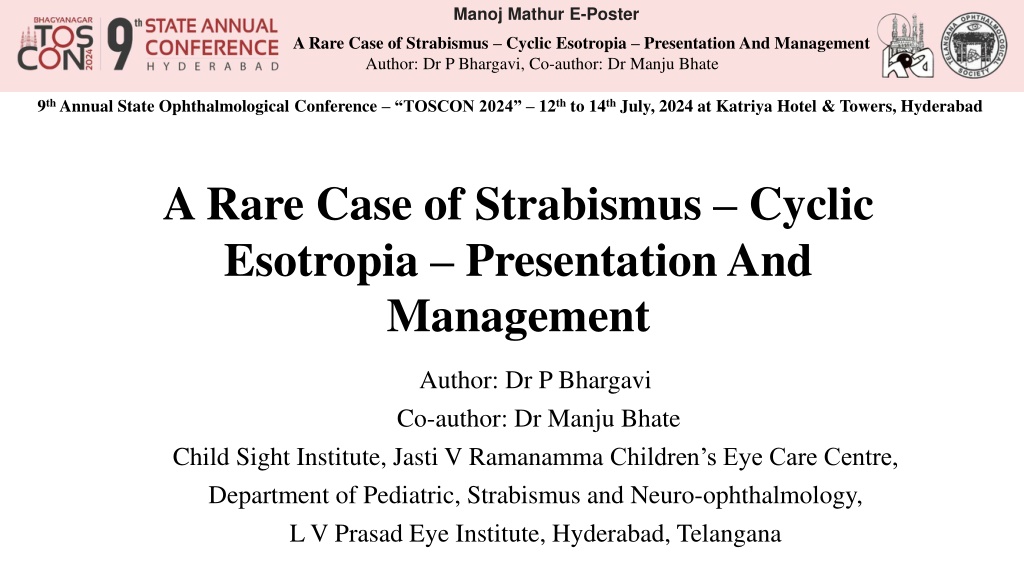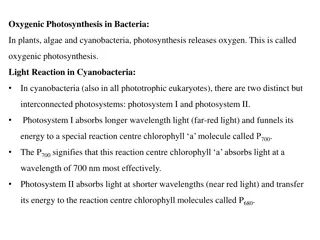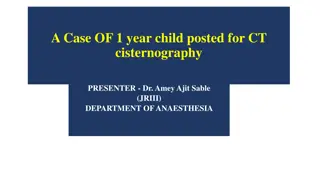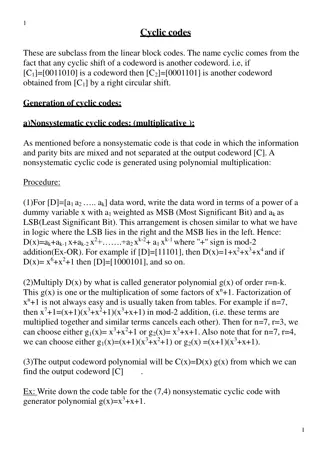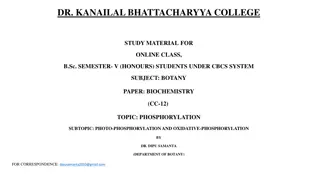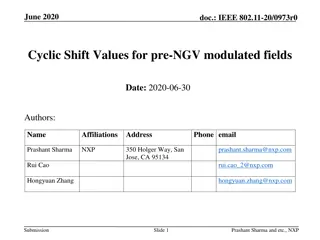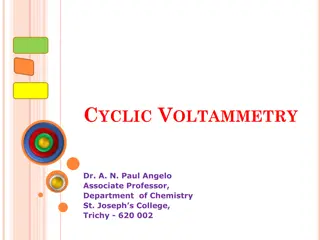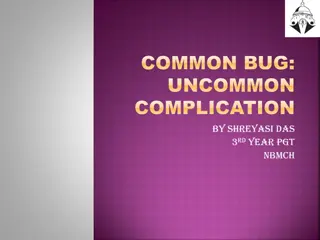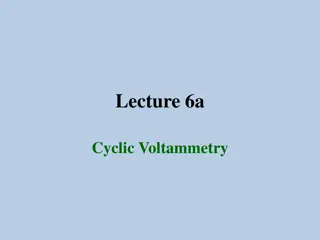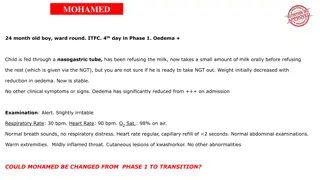Managing Cyclic Esotropia in a 6-Year-Old Child: A Case Report
A rare case of cyclic esotropia in a 6-year-old child is presented, highlighting the diagnosis, management, and successful outcome post bilateral medial rectus recession surgery. Primary cyclic esotropia, common in hyperopic children, was effectively treated with horizontal muscle surgery, leading to resolution of the esotropic and non-esotropic cycles without any vertical incommittence. Various aspects of the case and surgical intervention are discussed, emphasizing the importance of tailored treatment based on individual deviations.
Download Presentation

Please find below an Image/Link to download the presentation.
The content on the website is provided AS IS for your information and personal use only. It may not be sold, licensed, or shared on other websites without obtaining consent from the author. Download presentation by click this link. If you encounter any issues during the download, it is possible that the publisher has removed the file from their server.
E N D
Presentation Transcript
Manoj Mathur E-Poster A Rare Case of Strabismus Cyclic Esotropia Presentation And Management Author: Dr P Bhargavi, Co-author: Dr Manju Bhate 9thAnnual State Ophthalmological Conference TOSCON 2024 12thto 14thJuly, 2024 at Katriya Hotel & Towers, Hyderabad A Rare Case of Strabismus Cyclic Esotropia Presentation And Management Author: Dr P Bhargavi Co-author: Dr Manju Bhate Child Sight Institute, Jasti V Ramanamma Children s Eye Care Centre, Department of Pediatric, Strabismus and Neuro-ophthalmology, L V Prasad Eye Institute, Hyderabad, Telangana
Introduction Cyclic esotropia was first described in the English literature by Burian in 1958 . Duke-Elder mentioned the Cyclic Squint as a rare and curious condition which invariably takes the form of a temporary esotropia . Cyclic esotropia is an extremely uncommon form of non-paralytic strabismus, seen in 1 in 3000-5000 patients with strabismus. Classically, it follows a 48-hour cycle, with 24 hours of orthotropic and 24 hours of manifest large-angle esotropia.
Case Report A 6 year-old male child presented to our OPD with the complaint of acute onset infrequent squinting of the right eye for the past 2 years. According to his parents, the child had variable esotropia over the past 2 years. Initially, glasses were prescribed for hyperopia, and online follow- up was carried out with the help of photos via mobile phone. For the last 6 months, he had been esotropic for 24 hours and non- esotropic for another 24 hours. He complained of no diplopia during the attack. On examination he was otherwise healthy and showed alternate suppression. RIGHT EYE LEFT EYE Best Corrected Visual Acuity 20/20p 20/20p Cyclo-refraction +2.25/-1.00*180 +1.75/-1.00*180 Anterior and Posterior Segment No abnormality No abnormality External photograph of the patient showing right eye large-angle esotropia IOOA +2 IOOA +1
Post-Operative (Bilateral medial rectus recession 6.5 mm) Pre-Operative On esotropic day 40PD ET in the right eye- both distant and near fixation Post-operative 1 month Orthotropic both distant and near fixation
Discussion Primary cyclic esotropia occurrence is more frequent in children with hyperopia, as in our case, and bilateral over-elevation in adduction and V pattern are common in cyclic esotropia. This phenomenon seems to develop during the course of the disease and is probably caused by loss of fusion. Horizontal surgery alone can restore fusion and abolish the vertical incommitence completely. In our case also there was mild inferior oblique muscle overaction (IOOA) in the right eye with mild V pattern, but only horizontal muscle surgery led to collapse of the V pattern, and IOOA resolved after surgery. Post-surgery the child was orthophoric without cyclic pattern. Various case reports suggest that extraocular muscle surgery based on measurements of deviation on the squinting day gives excellent results. We, too, found good result with this approach.
Conclusion Cyclic esotropia is a rare, but important, differential diagnosis of strabismus with onset in childhood. A prompt diagnosis is necessary, since only early surgical treatment prevents the emergence into constant strabismus and consecutive loss of stereoscopic vision.
